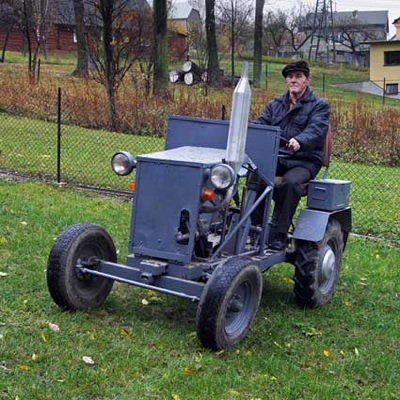If you're looking for gift ideas with
high energy appeal, the list below may be just the ticket. I think almost every garage tinkerer desperately wants at least some of these items, whether they know it now or not.
1. Interested in pyrotechnics? There are many fine books available, and some not so fine ones. If you're interested in learning how to make fountains, rockets, roman candles, shells, etc, there are two I've found to be excellent.

The first is
Introductory Practical Pyrotechnics by Tom Perigrin. I bought it from American Fireworks News (
http://www.fireworksnews.com/) . It's not inexpensive, but it's clear and fairly well written. The second is the
Dictionary and Manual of Fireworks by George Washington Weingart. It's a much older book and doesn't provide step by step instructions like Perigrins book, but it's a fine supplement to it.
 2.
2. When I wrote my first book,
Backyard Ballistics, I wasn't sure anybody would like it. I'm pleased to say that people do enjoy it. Over 200,000 copies sold and still going strong! Spud guns, dry cleaner bag balloons, and carbide cannons and such are what makes Makers great. Check it out.
3. Servo motors and radio transmitter. I have so many projects where I need to move something remotely. Recently, I wrote in Make Magazine issue 16 about a pole mounted camera, where the camera is mounted way up on a 20 foot long pole. How to trip the shutter? A servo motor of course. Servo's are great for robot control as well as their standard use controlling throttles and control surfaces on RC vehicles. (If you get a servo and radio for tinkering, use ground frequencies only.)
4. Serious makers and builders really must know something about "physical computing, " that is, sensing and controlling the non-digital, non-virtual world, with computers. The way most makers to that is through microcomputers. I've looked at several.

The
Make Controller, available from makershed.com has a lot of inputs and outputs including connections to servo motors!. Less expensive and therefore extremely popular is the Arduino. The
Arduino is cheap, has several analog and digital inputs and outputs, and is programmable in a C like language. There's also the
Basic Stamp, also cheap, but is programmable in Basic for dinosaurs like me. Available at
makershed.com5. Any electronic project requires soldering. Soldering isn't hard (well, too hard) if you have the right tools. This means a good iron and a great work holder. The best work holder I've found is made by
Panavise. Panavise's standard #301 vise coupled with the #312 base mount/part tray, and the #315 circuit board holder is the ticket. Simple to use, it allows pieces to be positioned comfortably and securely. It's what serious electronics people use. Thanks to John Edgar Park at Make TV for turning me on to this.
6. I think my book
Whoosh Boom Splat is way cool. Plans include a tee-shirt cannon, a steam cannon, and a nifty clothespin shooter that shoots lighted matches. Of course, I may be biased.
7. One of my favorite tools is a taser. Okay, that probably seems weird, but making a spark is often pretty important. Whenever you want to ignite something (say the propellant in a potato cannon, or a gas stream in a flamethrower) a taser works pretty darn well. Much easier than rigging an ignition coil, a taser makes sparks available anywhere, anytime. And, if the bad guys attack, you're ready for that as well. One of the least expensive, but highest voltage ones I've seen is
here at Amazon 8.
8. Anybody who makes anything should know about Make Magazine. (I'm a contributing editor there.) Four gigantic issues a year, each chocked full of information on how to make the greatest stuff in the world. See more at
http://www.makezine.com/ and if you agree,
go ahead and subscribe.








.jpg)


































.jpg)







